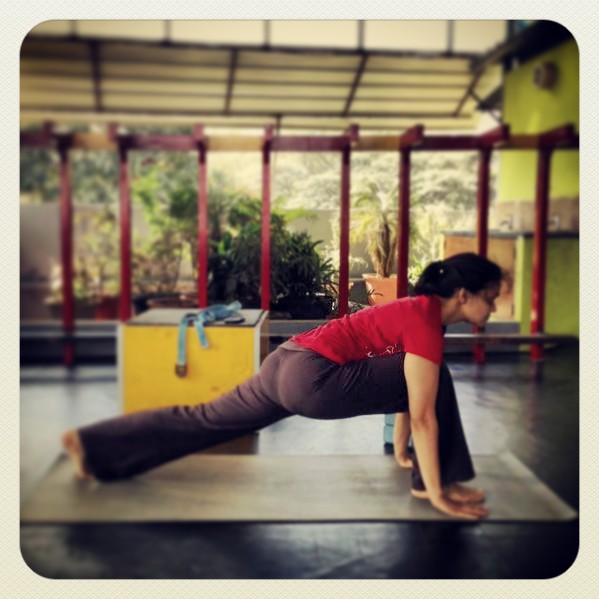Ashwasanchalanasana (Horse Pose/Low Lunge)
How To
- In the Padahastasana place your fingers next to your toes so that they are in line with each other.
- Lift your right leg off of the floor, take it back and place it on the floor.
- Look forward.
- Make sure that your left knee is in line with your left ankle. The knee should NEVER go beyond the level of the ankle.
- Look straight ahead.
- Repeat on left side.
Variations
If your legs and thighs are a bit stiff, or if you have weak knees and ankles, then place your back knee on the floor.
Benefits
- Great to strengthen the legs.
- Relieves stress by opening up the groin region and the hips.
- Helps in stretching and strengthening the spine.
- Opens up the chest and enables deeper breathing.
- Provides a massage to the abdominal organs and stimulates digestion.
- Corrects curvature of the back.
- Alleviates symptoms of sciatica.
Contraindications
- Practice with caution if you have a knee injury.
- Be cautious if you’ve had a neck injury. Don’t strain to look forward, look down instead.
- Practice with caution if pregnant. If required place the back knee on the floor.
- Practice with caution if you have a back injury.
- Do not practice if you have stomach ulcers.
- Do not practice if you’ve just undergone abdominal surgery.

